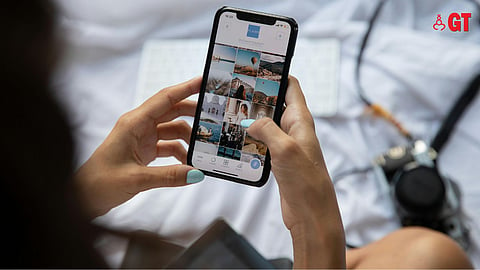

Goa's hidden gems are what make it special, and these have to always stay hidden and out of bounds for tourists. But in the age of social media that's easier said than done. The 'must-see' craze created by Instagrammers is proving to be challenging for some of our pristine locations.
Today's tourism puts a premium on the allure of the unseen that's creating more buzz than ever. It is about pulling the crowds by wooing them with enticing photos and videos that create intrigue. And, this intrigue is taking Goa’s tourism in a different direction.
Let the truth be told: the craze for that perfect Insta moment has created a scramble among influencers to explore unknown places. Instagram creates a powerful platform for sharing travel experiences. But there's a flip side: the pressure to portray a picture-perfect vacation can lead to an unrealistic portrayal of reality.
It's very difficult to say whether Goa's exposure to social media has led to some of its pristine locations witnessing unhealthy footfalls. There isn't always clear-cut data to directly connect social media posts to the surge in the State’s tourism.
Let the truth be told: the craze for that perfect Insta moment has created a scramble among influencers to explore unknown places. Instagram creates a powerful platform for sharing travel experiences.
The constant capturing of everything on social media is bound to infringe on the privacy and personal space of locals in tourist destinations and Goa is no exception. People in Fontainhas in Panjim have even put boards outside their homes saying 'photography is banned.'
Tourists clicking pictures in private places without the consent of the locals, particularly close-up shots, can be construed as not only intrusive, but also disrespectful. The constant presence of cameras can make locals feel like they're on display all the time, hindering their freedom to go about their daily tasks in peace.
Also, photos or videos might portray them in a stereotypical or insensitive way, not capturing the essence of their culture. The no-photography signs in Fontainhas are a strong message from residents. It shows they've reached a point where they feel the need to take a stand to protect their privacy and personal space.
After Fontainhas, the most exploited Instagram-famous tourism spot is the Parra-Madani road in North Goa, made famous by a Bollywood flick. The upswing of tourists on this narrow village road has led to altercations between locals and tourists, and, at times, they have even come to blows.
After Fontainhas, the most exploited Instagram-famous tourism spot is the Parra-Madani road in North Goa, made famous by a Bollywood flick.
The current state of tourism in Goa, with irresponsible practices and negative impacts, isn't ideal. At its core, travel should be about so much more than just capturing the perfect Instagram shot.
There is no doubt the availability of technology has made travel interesting and the lure of capturing the best shot of a place on camera is very hard to resist. But it so happens that travellers prioritise getting the perfect photo over genuinely experiencing a place or culture.
Social media can create an illusion of a picturesque waterfall as an idyllic destination, but there can be very real dangers lurking beneath the surface, especially in tourist destinations like Goa.
For example, a waterfall may be a great place to be, but Instagrammers do not talk about the hassles of reaching the place. Unaware tourists might attempt challenging hikes or activities based on social media posts, putting themselves at risk.
For example, a waterfall may be a great place to be, but Instagrammers do not talk about the hassles of reaching the place.
In earlier days, travel was meant to be enriching and transformative. But all that has changed since 2010, with social media deciding people's travel choices and turning it into a competitive sport. All that we do now is click a photo, upload it on social media and wait for the traffic of ‘likes’ and ‘comments.
Earlier, people travelled with their family; now the overbearing presence of the social media is constantly there with them. While on holiday, children are more pre-occupied with getting 'likes' for their posts on social media accounts than engaging with family.
Travel should be about personal growth and self-discovery and not about creating altered images that project falsity and surreal images of life.